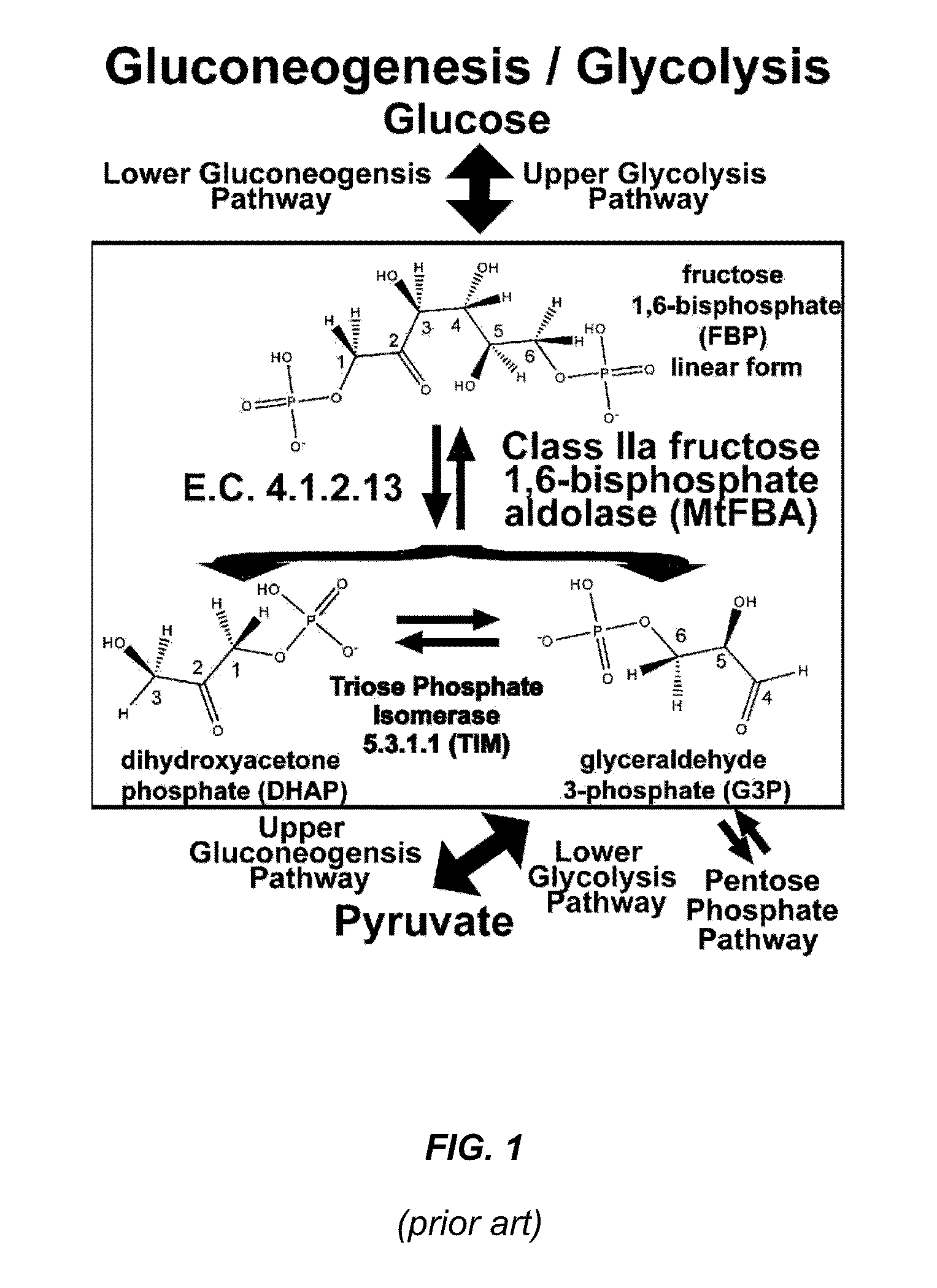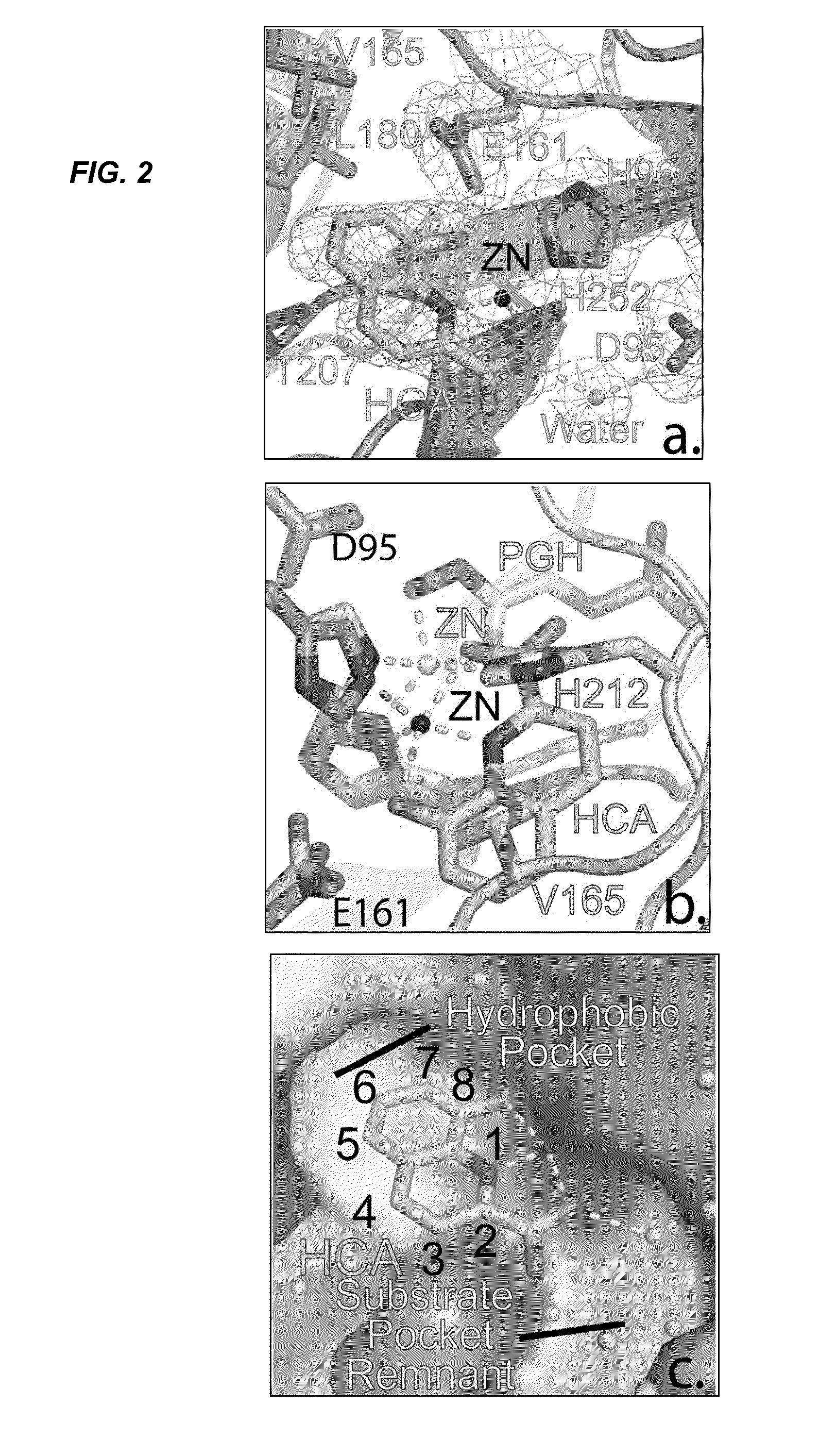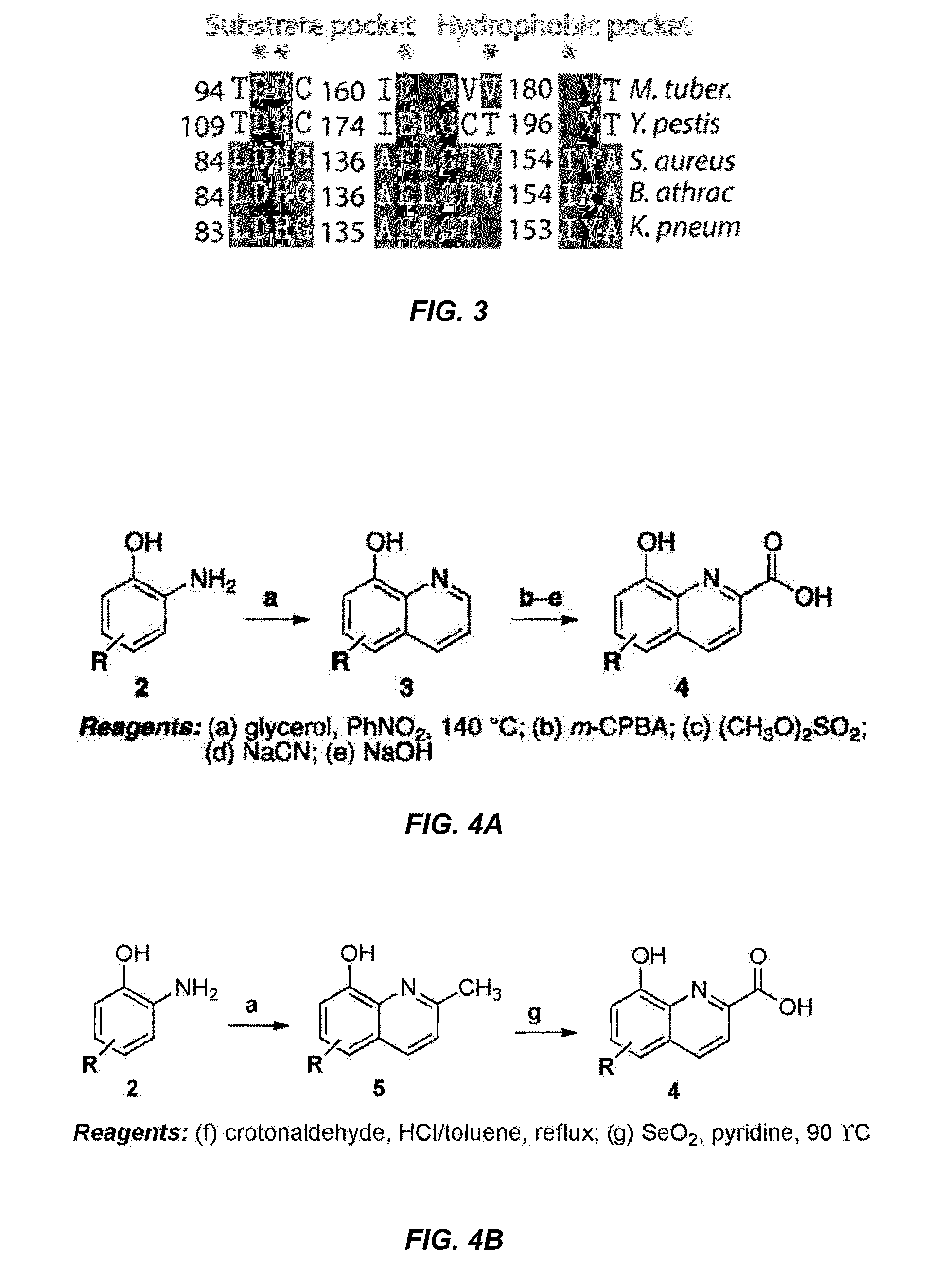Antibiotic and anti-parasitic agents that modulate class II fructose 1,6-bisphosphate aldolase
a technology of fructose 1,6-bisphosphate aldolase and antiparasitic agent, which is applied in the field of antibiotic and antiparasitic agent, can solve the problems of increasing the difficulty of patients complying to the lengthy dots regimen, the threat of drug-resistant weaponized bacterium such as bacillus anthracia, and the persistence of pestis /i>, so as to improve the effect of tolerability, tolerability, delivery or pharmacokineti
- Summary
- Abstract
- Description
- Claims
- Application Information
AI Technical Summary
Benefits of technology
Problems solved by technology
Method used
Image
Examples
examples
[0092]FIG. 5 provides data from the calorimetric titration of 8-hydroxyquinoline-2-carboxylic acid (HCA). Left-side panels show 5 mM Regis 5 titrated into 700 μM of MtFBA demonstrating a Kd=6.94±0.97 μM, ΔH=−28.73±0.58 kJ mol−1, ΔS=2.44±3.12 J mol−1 K−1, and n=0.94±0.14. Right-side panels show 1 mM Regis 5 titrated into MtFBA buffer with 200 μM ZnCl2, exhibiting no appreciable binding. Top graphs represent raw heat data and bottom graphs are integrated heat peaks gained at 25° C. from 25 injections of Regis 5 into 170 μL of 20 mM Tricine pH 8.0, 100 mM NaCl, and either (a) 700 μM MtFBA with 100 μM ZnCl2 or (b) 200 μM ZnCl2. Data sets were collected in duplicate, analyzed with NanoAnalyze™ software, and fit to an independent model concurrently with a bank constant model to adjust for a heat of dilution. The line shows the best fit to an independent model.
[0093]FIG. 6 provide MtFBA inhibitor properties of HCA. FIG. 6A is a Lineweaver-Burk plot of the kinetics of inhibition of MtFBA by...
PUM
| Property | Measurement | Unit |
|---|---|---|
| time | aaaaa | aaaaa |
| time | aaaaa | aaaaa |
| dissociation constant | aaaaa | aaaaa |
Abstract
Description
Claims
Application Information
 Login to View More
Login to View More - R&D
- Intellectual Property
- Life Sciences
- Materials
- Tech Scout
- Unparalleled Data Quality
- Higher Quality Content
- 60% Fewer Hallucinations
Browse by: Latest US Patents, China's latest patents, Technical Efficacy Thesaurus, Application Domain, Technology Topic, Popular Technical Reports.
© 2025 PatSnap. All rights reserved.Legal|Privacy policy|Modern Slavery Act Transparency Statement|Sitemap|About US| Contact US: help@patsnap.com



